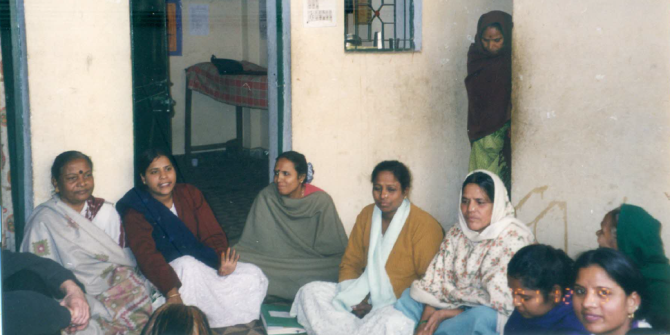A new International Growth Centre report identifies the repayment schedule, which requires borrowers to repay loans immediately, as one of the main problems in microfinance.
Loans made available through microfinance help some of the poorest people in developing countries to start saving more and making money for themselves. But more needs to be done if these loans are to kick start small businesses. That is one of the findings from IGC-funded research carried out in India by Erica Field, Rohini Pande, John Papp and Natalia Rigol (a related IGC research project analysed microfinance in the rural areas of Morocco).
According to the State of the Microcredit Summit Campaign Report, microfinance reaches more than 175 million of the poorest families and is helping 100 million of those families rise out of poverty. That so many have been reached shows just how far microfinance institutions (MFIs) have come since the early days in rural Bangladesh 40 years ago. Financial services are now extending beyond conventional systems to reach some of the world’s poorest people.
But the hopes placed on microfinance go well beyond the expansion of the access to financial services. Supporters of microfinance believe that, among other things, it alleviates poverty, creates self-employment, promotes gender equality, empowers women (since microfinance usually targets women as clients), and helps towards achieving universal primary education. Critics, on the other hand, believe that microfinance can hurt the poor by causing over-indebtedness, and is, in any case, not effective at addressing the root cause of poverty.
While microfinance has enjoyed considerable public support, MFIs have recently suffered a considerable backlash in India, Latin America and even Bangladesh. In some countries, previously stellar repayment rates are now much lower. While the crisis in public support has its origin in politics – at least in India and Bangladesh – it remains possible that the lack of objective evidence on the effects of microfinance, evidence that could be used to bolster the case for microfinance, may be affecting the ability of MFIs to garner public support.
Until recently, there were no ‘randomised’ evaluations of the effect of microfinance. That is, there were no studies where one randomly selected group receives microfinance to then be compared with another randomly selected and similar group that does not. The IGC’s recent research initiative in India aims to provide just such an evaluation.
The study, ‘Term Structure of Debt and Entrepreneurship’, identifies the repayment schedule as one of the main problems in microfinance. Financiers across the world structure debt contracts to limit the risk of entrepreneurial lending. But debt structures that reduce risk may inhibit enterprise growth, especially among the poor. This becomes apparent in cases where borrowers must start repaying loans immediately, a condition that restricts their ability to invest, particularly in areas that give a high return but do not provide a regular flow of cash.
In 2007, Field et al partnered with Village Financial Services, a microfinance provider in Kolkata, India. They ran a randomised experiment to analyse the short- and long-term trade-offs if banks were more flexible about how and when loans can be repaid. Clients were randomly assigned to either receive the classic microfinance loan, with repayments starting immediately, or a new loan in which clients were given a two-month ‘grace’ period before they had to start repaying. The study finds that:
- Allowing clients a grace period before they begin repayment can help them invest a greater part of their loan into more profitable businesses.
- The shift to a grace period contract increased short-run business investments and long-run profits, implying average return to capital of over eight per cent per month.
- Clients who were allowed a two-month grace period invested almost 10 per cent more of their loan amount into their businesses compared with clients who had the standard microfinance loan.
- Grace period clients also reported weekly profits from their businesses that were on average 30 per cent higher than those without the grace period.
But the study also finds that greater flexibility in repayment raises the number of people who default on their loans. This suggests that while greater flexibility is better for the clients, it is costlier for the microfinance providers.
Field et al suggest a possible solution might be to offer clients a choice. Either they opt for a loan with a more flexible repayment schedule but higher interest rates or they opt for the current loan with an immediate repayment schedule but lower interest rates. Microfinance providers may also be able to lower transaction costs if they provide more flexible repayment schedules by allowing clients to repay monthly rather than weekly.
The study’s authors are from Harvard University (Field and Pande), Princeton University (Papp) and MIT (Rigol).
Photo credit: CARE India








